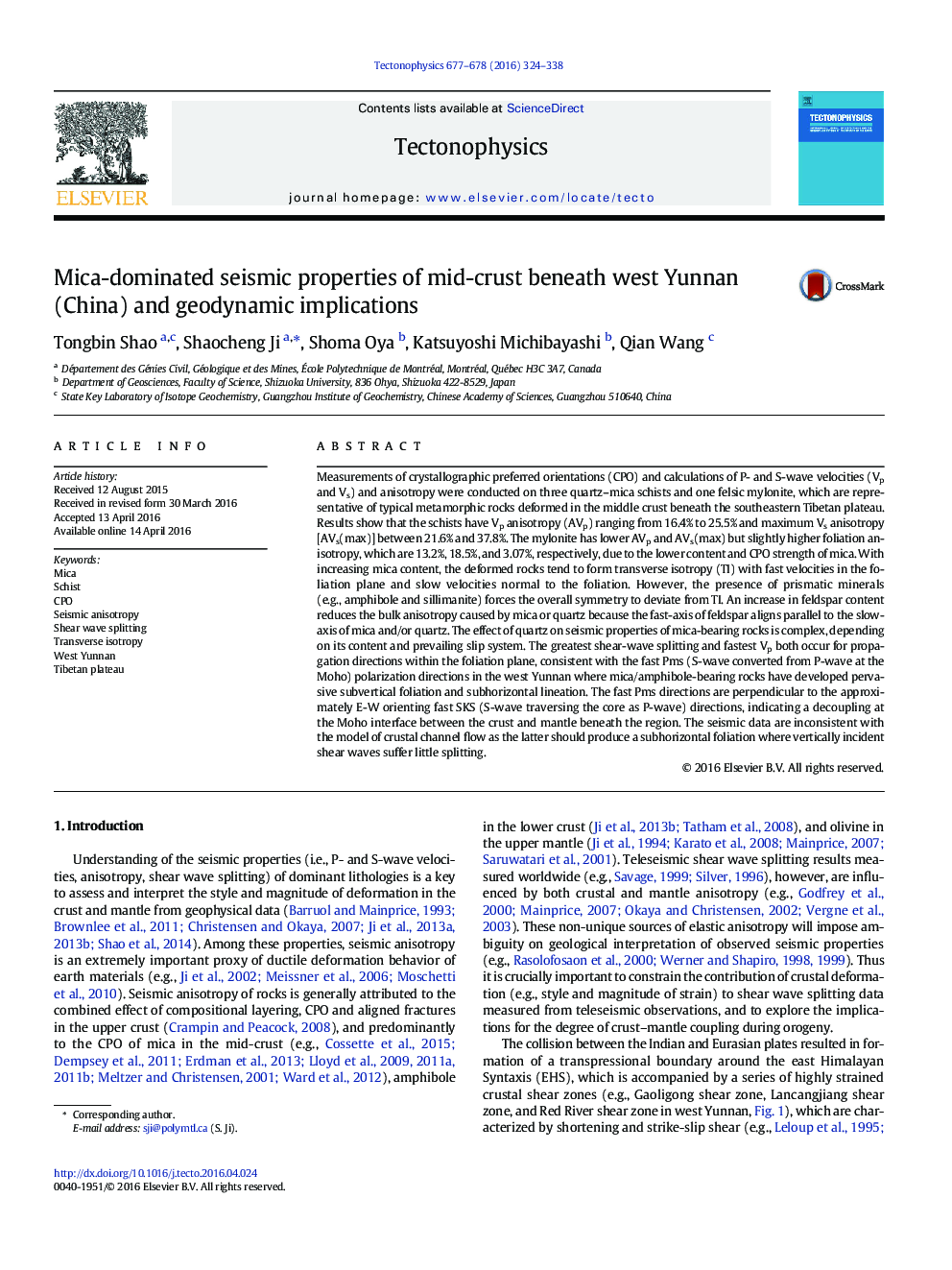| کد مقاله | کد نشریه | سال انتشار | مقاله انگلیسی | نسخه تمام متن |
|---|---|---|---|---|
| 4691362 | 1636720 | 2016 | 15 صفحه PDF | دانلود رایگان |
• Departure of schists from transverse isotropy by quartz, amphibole and sillimanite
• Feldspar generally reduces the bulk anisotropy caused by mica or quartz.
• Decoupling between crust and upper mantle beneath west Yunnan (China)
• Crustal channel flow cannot explain the decoupling at the Moho interface.
Measurements of crystallographic preferred orientations (CPO) and calculations of P- and S-wave velocities (Vp and Vs) and anisotropy were conducted on three quartz–mica schists and one felsic mylonite, which are representative of typical metamorphic rocks deformed in the middle crust beneath the southeastern Tibetan plateau. Results show that the schists have Vp anisotropy (AVp) ranging from 16.4% to 25.5% and maximum Vs anisotropy [AVs(max)] between 21.6% and 37.8%. The mylonite has lower AVp and AVs(max) but slightly higher foliation anisotropy, which are 13.2%, 18.5%, and 3.07%, respectively, due to the lower content and CPO strength of mica. With increasing mica content, the deformed rocks tend to form transverse isotropy (TI) with fast velocities in the foliation plane and slow velocities normal to the foliation. However, the presence of prismatic minerals (e.g., amphibole and sillimanite) forces the overall symmetry to deviate from TI. An increase in feldspar content reduces the bulk anisotropy caused by mica or quartz because the fast-axis of feldspar aligns parallel to the slow-axis of mica and/or quartz. The effect of quartz on seismic properties of mica-bearing rocks is complex, depending on its content and prevailing slip system. The greatest shear-wave splitting and fastest Vp both occur for propagation directions within the foliation plane, consistent with the fast Pms (S-wave converted from P-wave at the Moho) polarization directions in the west Yunnan where mica/amphibole-bearing rocks have developed pervasive subvertical foliation and subhorizontal lineation. The fast Pms directions are perpendicular to the approximately E-W orienting fast SKS (S-wave traversing the core as P-wave) directions, indicating a decoupling at the Moho interface between the crust and mantle beneath the region. The seismic data are inconsistent with the model of crustal channel flow as the latter should produce a subhorizontal foliation where vertically incident shear waves suffer little splitting.
Journal: Tectonophysics - Volumes 677–678, 23 May 2016, Pages 324–338
